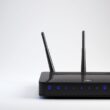Introduction
The black screen of death is a common issue that many Samsung Galaxy phone users encounter. It can be frustrating and inconvenient, as it prevents you from using your phone and accessing your data. However, there are several fixes that you can try to resolve this problem and get your phone back up and running.
One possible cause of the black screen of death is a software glitch or a system crash. This can happen when your phone’s operating system encounters an error or becomes unresponsive. In such cases, a simple restart may fix the issue. To do this, press and hold the power button for about 10 seconds until the phone vibrates and restarts. If the black screen persists, try performing a forced restart by simultaneously pressing and holding the volume down button and the power button for about 10 seconds.
If a restart doesn’t solve the problem, it may be worth checking if your phone’s battery is completely drained. Connect your phone to a charger and let it charge for at least 15 minutes. Sometimes, a drained battery can cause the screen to appear black. If the battery was the culprit, your phone should turn on and function normally once it has enough charge.
Another possible solution is to perform a factory reset. This will erase all data and settings on your phone, so make sure you have a backup of your important files before proceeding. To perform a factory reset, go to the Settings menu on your phone, select “Backup and Reset,” and then choose “Factory Data Reset.” Follow the on-screen instructions to complete the process. Keep in mind that this should be a last resort, as it will erase all data on your phone.
If none of the above solutions work, it may be worth seeking professional help. Contact Samsung customer support or visit an authorized service center to have your phone examined by a technician. They will be able to diagnose the issue and suggest the best course of action. In some cases, the black screen problem may be caused by a hardware malfunction that requires repair or replacement.
In conclusion, the black screen of death can be a frustrating issue for Samsung Galaxy phone users. However, there are several steps you can take to try and resolve the problem. From simple restarts to factory resets, these solutions can help you get your phone back up and running. If all else fails, seeking professional help is recommended to diagnose and fix any underlying hardware issues.
2. Check for Software Updates
If force restarting your Samsung Galaxy phone did not resolve the black screen issue, it is worth checking if there are any available software updates. Software updates often come with bug fixes and improvements that can address common issues, including the black screen problem. To check for software updates, follow these steps:
- Go to the Settings app on your phone.
- Scroll down and tap on “Software Update.”
- Tap on “Download and Install” if an update is available.
- Follow the on-screen instructions to complete the update process.
Once the software update is installed, restart your phone and check if the black screen issue is resolved. If not, there are other troubleshooting steps you can try.
2. Charge Your Phone
Another common reason for the black screen of death is a drained battery. If your phone’s battery is completely depleted, it may not turn on or display anything on the screen. To fix this, try charging your phone using a different charger and cable. Leave it connected for at least 30 minutes before attempting to turn it on again.
Sometimes, a drained battery can be the result of using a faulty charger or cable. The charger or cable may not be delivering the necessary power to charge the battery properly. In such cases, using a different charger and cable can make a significant difference.
It is also important to note that some chargers and cables may not be compatible with certain phone models. For example, if you are using a charger and cable that are not specifically designed for your phone, it may not charge the battery effectively. Therefore, it is always recommended to use the charger and cable that came with your phone or purchase a certified charger and cable from a reputable manufacturer.
When charging your phone, make sure to connect it to a reliable power source. Using a wall outlet is generally the most reliable option, as it provides a stable and consistent power supply. Avoid charging your phone using a computer or other devices, as they may not deliver enough power to charge the battery properly.
Once you have connected your phone to the charger, be patient and allow it to charge for at least 30 minutes before attempting to turn it on. This is because a completely drained battery may need some time to accumulate enough charge to power on the phone. Trying to turn on the phone immediately after connecting it to the charger may result in a continued black screen.
If after 30 minutes your phone still does not turn on or display anything on the screen, there may be other underlying issues causing the black screen of death. In such cases, it is recommended to seek professional help or contact the manufacturer’s customer support for further assistance. They will be able to diagnose and resolve the problem more effectively.
3. Boot into Safe Mode
If your Samsung Galaxy phone is experiencing the black screen issue due to a third-party app, booting into safe mode can help you identify and uninstall the problematic app. Here’s how you can do it:
- Press and hold the power button until the power menu appears on the screen.
- Tap and hold the “Power off” option until the “Restart in Safe Mode” prompt appears.
- Tap “OK” to enter safe mode.
- If your phone turns on successfully in safe mode, it means that a third-party app is causing the black screen issue. Uninstall recently installed apps one by one until the problem is resolved.
- To exit safe mode, simply restart your phone.
Booting into safe mode is a useful troubleshooting step when your Samsung Galaxy phone encounters a black screen issue. Safe mode is a diagnostic mode that disables all third-party apps, allowing you to determine if the problem is caused by an app you recently installed. By following the steps outlined above, you can easily enter safe mode and begin the process of identifying and uninstalling the problematic app.
Once you have entered safe mode, take note of any changes in your phone’s behavior. If the black screen issue is resolved and your phone functions normally, it indicates that a third-party app is indeed causing the problem. In this case, you will need to uninstall recently installed apps one by one to pinpoint the culprit. Start with the most recently installed apps and uninstall them individually, restarting your phone after each uninstallation. This will help you identify the specific app that is causing the black screen issue.
It is important to note that safe mode only disables third-party apps, meaning that pre-installed system apps will still be active. If the black screen issue persists even in safe mode, it is possible that the problem is not caused by a third-party app but rather a system issue. In such cases, it is recommended to seek further assistance from Samsung’s customer support or visit a service center for professional diagnosis and repair.
Once you have successfully identified and uninstalled the problematic app, you can exit safe mode by simply restarting your phone. This will bring your device back to its normal operating mode, with all your essential apps and functions restored. Remember to reinstall any necessary apps that you may have uninstalled during the troubleshooting process.
Overall, booting into safe mode is an effective method to troubleshoot and resolve the black screen issue on your Samsung Galaxy phone. By following the steps provided and carefully uninstalling recently installed apps, you can regain full functionality of your device and prevent any further disruptions caused by problematic apps.
4. Wipe Cache Partition
Corrupted cache files can sometimes cause the black screen of death on Samsung Galaxy phones. Wiping the cache partition can help resolve this issue. Here’s how you can do it:
- Turn off your phone.
- Press and hold the power button, volume up button, and the home button simultaneously.
- Release the buttons when the Android recovery menu appears on the screen.
- Use the volume down button to navigate to the “Wipe Cache Partition” option.
- Press the power button to select the option.
- Wait for the process to complete, and then select the “Reboot System Now” option.
Wiping the cache partition is a useful troubleshooting step that can help fix various issues on your Samsung Galaxy phone. When you use your phone, it stores temporary files and data in the cache partition to speed up processes and improve performance. However, over time, these files can become corrupted or outdated, leading to issues like the black screen of death.
By wiping the cache partition, you essentially clear out these temporary files and data, allowing your phone to start fresh. This process does not delete any personal data or settings, so you don’t have to worry about losing any important information.
Here’s a step-by-step guide on how to wipe the cache partition on your Samsung Galaxy phone:
- Turn off your phone completely. This is important to ensure that the cache partition is cleared properly.
- Press and hold the power button, volume up button, and the home button simultaneously. Hold these buttons until the Android recovery menu appears on the screen.
- Once you see the recovery menu, use the volume down button to navigate to the “Wipe Cache Partition” option. This option may be located under different names depending on your phone model, but it should be something similar.
- Press the power button to select the “Wipe Cache Partition” option. This will start the process of clearing the cache partition.
- Wait for the process to complete. This may take a few minutes, so be patient. You will see a progress bar on the screen indicating the status of the process.
- Once the process is complete, you will be taken back to the recovery menu. Use the volume down button to navigate to the “Reboot System Now” option.
- Press the power button to select the “Reboot System Now” option. Your phone will restart, and the cache partition will be cleared.
After you have wiped the cache partition, your Samsung Galaxy phone should start up normally. This process can help resolve various issues, including the black screen of death. If you continue to experience problems, you may need to consider other troubleshooting steps or contact Samsung support for further assistance.
5. Factory Reset
If none of the above solutions work, you may need to perform a factory reset on your Samsung Galaxy phone. This will erase all data and settings on your device, so make sure to back up your important files before proceeding. To perform a factory reset, follow these steps:
- Turn off your phone.
- Press and hold the power button, volume up button, and the home button simultaneously.
- Release the buttons when the Android recovery menu appears on the screen.
- Use the volume down button to navigate to the “Wipe Data/Factory Reset” option.
- Press the power button to select the option.
- Confirm the factory reset by selecting “Yes” and wait for the process to complete.
- Select the “Reboot System Now” option to restart your phone.
Performing a factory reset is a drastic measure that should only be taken when all other troubleshooting steps have failed. It is important to note that a factory reset will erase all data and settings on your Samsung Galaxy phone, including apps, contacts, photos, and any other personal information stored on the device. Therefore, it is crucial to create a backup of your important files before proceeding with the factory reset.
To back up your data, you can use various methods such as syncing your phone with a cloud storage service like Google Drive or Samsung Cloud, transferring files to a computer using a USB cable, or using third-party backup apps available on the Google Play Store. Once you have successfully backed up your data, you can proceed with the factory reset.
To initiate the factory reset, start by turning off your Samsung Galaxy phone. This can be done by pressing and holding the power button until the power options menu appears, then selecting the “Power off” option. Once the phone is powered off, you can proceed with the next steps.
Press and hold the power button, volume up button, and the home button simultaneously. These buttons are typically located on the sides or front of the device, depending on the model. Continue holding the buttons until the Android recovery menu appears on the screen. This menu provides various options for troubleshooting and system maintenance.
Using the volume down button, navigate to the “Wipe Data/Factory Reset” option. This option may be labeled differently on some Samsung Galaxy models, but it generally refers to the process of erasing all data and settings on the device. Once you have highlighted the correct option, press the power button to select it.
A confirmation prompt will appear asking if you are sure you want to perform the factory reset. Use the volume down button to navigate to the “Yes” option and press the power button to confirm your selection. The factory reset process will then begin, and you will see a progress bar indicating the status of the reset.
It is important to note that the factory reset process may take some time to complete, depending on the amount of data stored on your Samsung Galaxy phone. During this time, it is crucial not to interrupt the process or remove the battery from the device, as this could potentially cause damage to the phone.
Once the factory reset is complete, you will be taken back to the Android recovery menu. Use the volume down button to navigate to the “Reboot System Now” option and press the power button to select it. This will restart your Samsung Galaxy phone, and it will be restored to its original factory settings.
After the phone has restarted, you will need to go through the initial setup process, including signing in with your Google account and restoring your backed-up data. It is important to remember that any data or settings that were not backed up prior to the factory reset will be permanently deleted and cannot be recovered.
In conclusion, performing a factory reset on your Samsung Galaxy phone can be an effective solution when all other troubleshooting steps have failed. However, it is crucial to create a backup of your important files before proceeding, as a factory reset will erase all data and settings on the device. By following the steps outlined above, you can safely and effectively perform a factory reset on your Samsung Galaxy phone.



